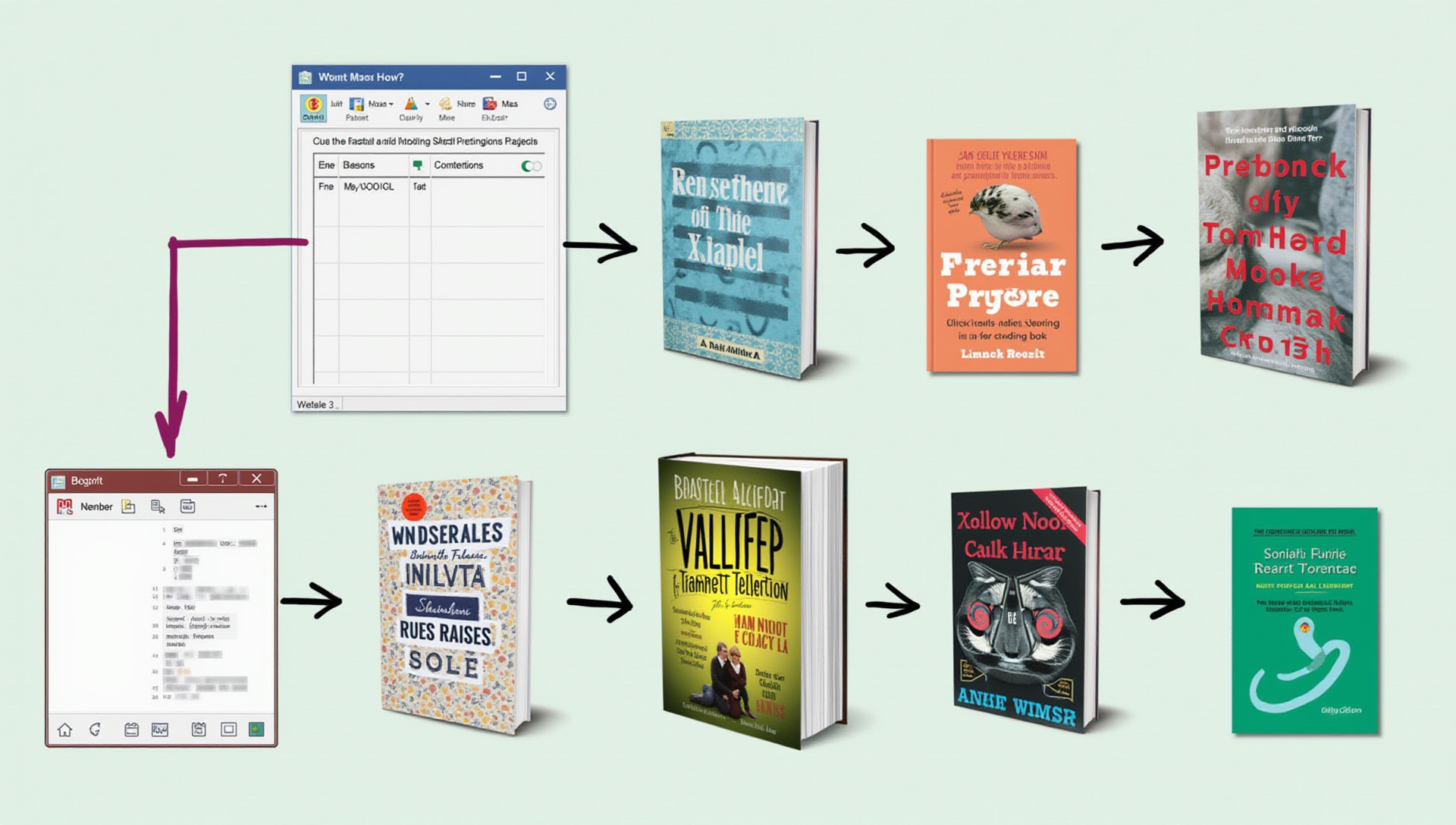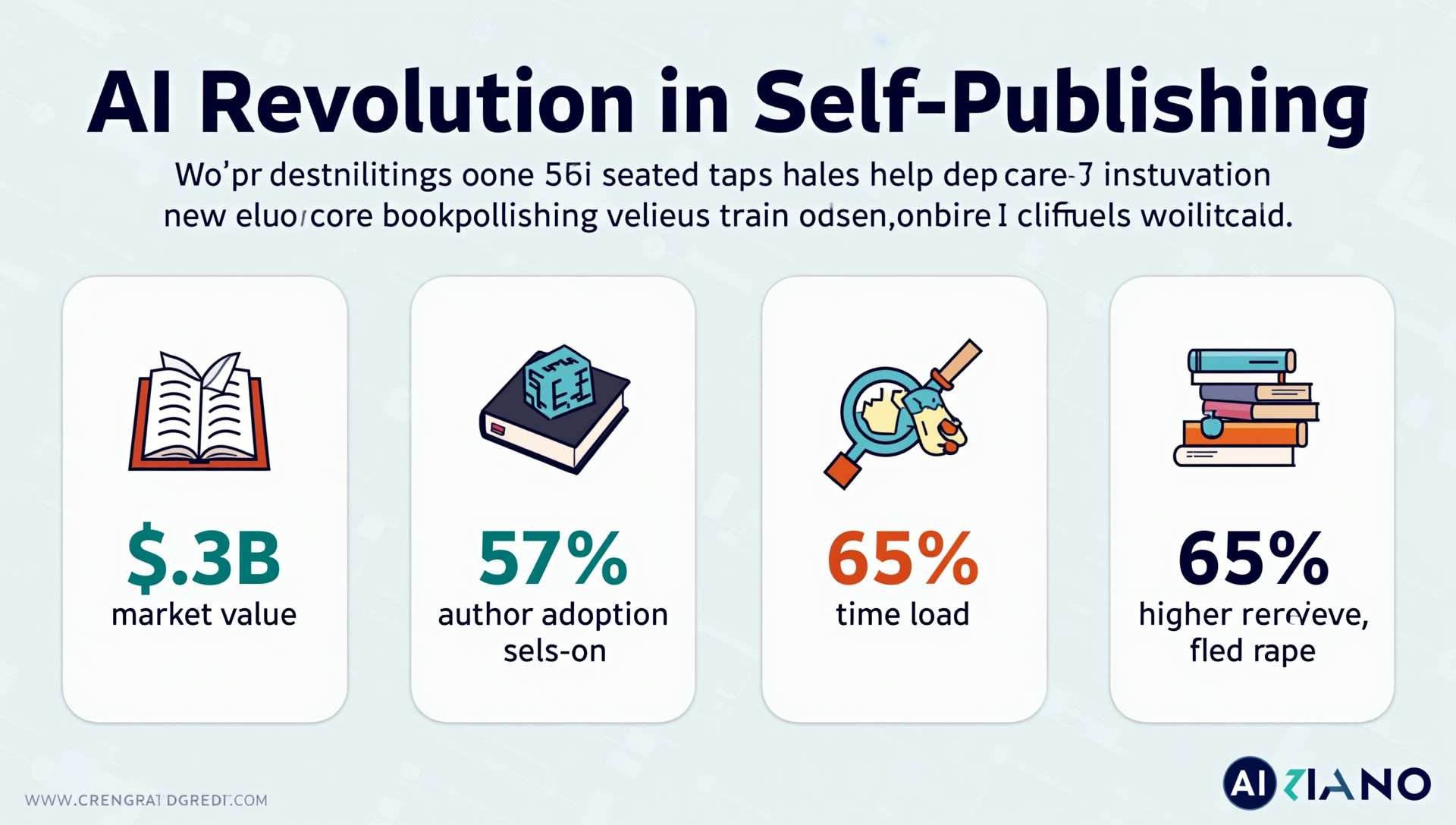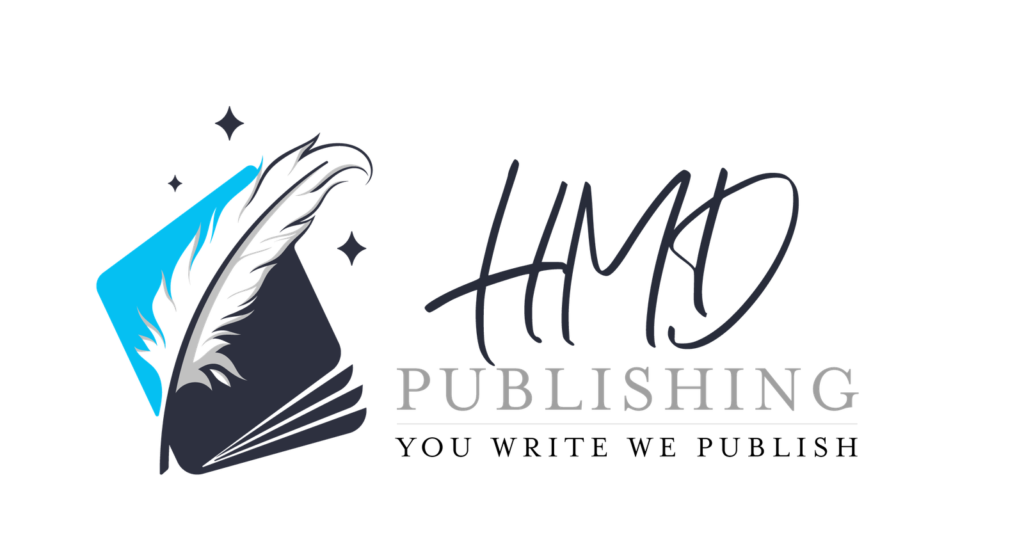The marriage of AI writing tools and self-publishing technology has created unprecedented opportunities for indie authors to boost productivity and revolutionize their publishing strategies. Today’s self-published authors are leveraging book marketing AI and publishing innovations to compete effectively with traditional publishers, creating a new paradigm in the industry.
The Self-Publishing Revolution 2.0: AI’s Transformative Impact
The self-publishing market has exploded to a $6.3+ billion global industry, with AI serving as a key accelerator. This growth coincides with a significant increase in AI adoption rates among independent authors, with 57% now using at least one AI tool in their publishing workflow.
Authors embracing AI-enhanced publishing report 28% higher revenue compared to those using traditional methods alone. This financial advantage stems from reduced production costs, faster publishing cycles, and more effective marketing capabilities that AI tools provide.
The publishing industry transformation is happening at an unprecedented pace, with AI democratizing previously exclusive skills. Self-published authors now have access to tools that can compete with big publishing houses’ resources at a fraction of the cost.
AI Writing Assistants: From Blank Page to First Draft
Modern AI writing assistants like ChatGPT, Claude, Sudowrite, NovelAI, and Jasper offer varied approaches to manuscript development. ChatGPT and Claude excel at brainstorming and research assistance, while Sudowrite and NovelAI specialize in fiction, offering character development and scene expansion capabilities.
These tools can transform your creative workflow by generating outlines, creating character profiles, and suggesting plot developments. I’ve found they’re most effective when used as collaborative partners rather than replacement writers, helping enhance your natural voice instead of overtaking it.
For writer’s block solutions, AI assistants offer immediate pathways forward. When you’re stuck on a scene or character interaction, tools like Sudowrite can generate multiple options to consider, often sparking your own creative solutions.
Success stories abound from both fiction and non-fiction authors using AI. Fantasy author Rebecca Johnson credits AI outlining tools with helping her complete her latest trilogy in half the normal time, while non-fiction writer Michael Chen used AI research assistants to compile case studies that would have taken months to gather manually.

Perfecting Your Prose: AI-Powered Editing Solutions
The latest generation of AI editing tools goes far beyond basic spell-checking. ProWritingAid AI, Grammarly Premium, and AutoCrit analyze your writing for pacing, style consistency, and genre-appropriate language patterns, offering suggestions that can transform good writing into great writing.
Stylistic analysis tools like PerfectIt and the Hemingway Editor AI identify complex sentences, passive voice, and readability issues that might disengage readers. These tools use AI to highlight areas where your writing might lose reader attention, allowing you to make targeted improvements.
Different genres benefit from specialized editing applications that understand genre-specific conventions. Fiction dialogue enhancement tools can analyze character voice consistency, while academic editing tools check for citation format and scholarly tone appropriate to your field.
The cost savings are substantial, with AI editing offering 30-40% reduced expenses compared to traditional human editors. Many successful authors use a hybrid approach—AI for initial editing rounds, followed by a more focused human edit—getting the best of both worlds while stretching their publishing budget.

Visual Storytelling: AI Tools for Book Cover Design and Interior Formatting
The book cover design AI revolution has made professional-quality covers accessible to authors on limited budgets. Midjourney, DALL-E 3, and Canva AI Designer have become go-to platforms for indie authors who want covers that can compete with traditionally published books.
Creating a professional cover without design experience is now achievable through a step-by-step process. Start by analyzing successful covers in your genre, create a clear design brief with specific elements, generate multiple AI variations, and then refine your favorite design with targeted prompts until it matches your vision.
Interior formatting has also been transformed by tools like Atticus, Vellum AI features, and Reedsy Book Editor. These platforms automate complex formatting tasks like drop caps, chapter headings, and image placement while ensuring your book looks professional across all reading devices.
The time reduction is perhaps the most valuable benefit, with AI-assisted design cutting production time by 60-70%. What once took weeks of back-and-forth with designers can now be accomplished in days or even hours, accelerating your path to publication.
The Audio Revolution: AI Tools for Audiobook Creation
AI voice synthesis platforms like DeepZen, Speechki, and Apple’s digital narration have dramatically lowered the entry barrier to audiobook production. These tools can transform your manuscript into a professional-sounding audiobook without requiring a recording studio or professional narrator.
The quality gap between AI and human narration continues to narrow, though differences remain. Human narrators still excel at emotional nuance and character distinction, while AI offers perfect consistency, no flubbed lines, and the ability to make unlimited corrections without additional recording sessions.
The production cost analysis reveals why AI audiobooks are gaining popularity. Traditional recording with a professional narrator typically costs $1,000-3,000 for a standard-length book, while AI solutions range from $50-300, making audiobook creation feasible for budget-conscious authors.
Creating a market-ready audiobook using AI involves preparing your manuscript with pronunciation guides, selecting the appropriate AI voice for your genre, reviewing and adjusting the generated audio, and preparing the final files for distribution platforms like Audible and Apple Books.

Marketing Intelligence: AI-Powered Promotion Strategies
AI market analysis tools like PublishDrive AI and K-lytics provide audience analysis that was previously available only to large publishers. These platforms analyze vast amounts of market data to identify reader demographics, buying patterns, and emerging genre trends that can inform your marketing strategy.
Advertising optimization has been transformed by AI-powered platforms like BookBub Ads and Amazon Advertising Console. These tools automatically test different ad variations, target the most responsive reader segments, and adjust bids in real-time to maximize your return on investment.
Email marketing with AI-driven personalization through platforms like ConvertKit and Mailchimp AI features has boosted engagement rates for many authors. These tools analyze subscriber behavior to determine the best sending times, subject lines, and content types for different reader segments.
Social media management has become less time-consuming with AI tools like Lately AI and Hootsuite AI integration. These platforms can generate multiple social posts from a single piece of content, schedule them for optimal times, and analyze performance to refine your social strategy.
Metadata Mastery: Using AI to Boost Discoverability
AI-powered keyword research tools like Publisher Rocket and KDP Rocket have become essential for maximizing book visibility. These tools analyze Amazon search data to identify high-volume, low-competition keywords that can help your book appear in more search results.
Automated book description generators like Book Brush AI and various Blurb Generators use persuasive copywriting techniques to create descriptions optimized for conversion. The AI analyzes successful books in your genre to identify compelling language patterns that entice readers to buy.
Category selection is simplified with tools like K-lytics and KDP Category Analytics, which identify less competitive categories where your book can achieve a higher ranking. AI helps analyze the sales velocity needed to rank in different categories, allowing you to find the sweet spot between visibility and competition.
Authors using AI-optimized metadata report up to 35% increased discoverability for their titles. This improvement comes from the AI’s ability to analyze vast amounts of market data and identify opportunities that human analysis might miss.
Reader Engagement: AI Tools for Building Your Author Platform
AI-powered chatbots on author websites and social media are changing how authors interact with fans. Tools like ManyChat and Chatfuel can answer common reader questions, collect email addresses, and even guide readers to their next book purchase without requiring your constant attention.
Personalized reader recommendation systems through platforms like BookFunnel and StoryOrigin help match readers with the right books in your catalog. These systems analyze reading preferences and past behavior to suggest the perfect next read, increasing series completion rates and backlist sales.
Automated reader engagement through email sequences can nurture fan relationships even when you’re focused on writing. AI can determine the optimal frequency, content types, and offers based on subscriber behavior, ensuring readers remain engaged between book releases.
Fantasy author Mark Dawson credits his AI-powered reader engagement system with doubling his newsletter conversion rate and increasing reader retention by 40%. His system automatically segments readers by preferred subgenre and reading frequency, delivering targeted content that keeps fans coming back.
The Ethical Author: Navigating AI Usage Responsibly
Transparency about AI usage varies among authors, with some openly discussing their AI collaboration while others keep it private. The current industry consensus suggests disclosing AI assistance for substantial content creation but not necessarily for editing or research assistance.
Copyright considerations remain an evolving area, with best practices including using AI as a tool rather than a creator, reviewing all AI output for potential plagiarism, and maintaining records of your prompts and modifications. These precautions help establish your creative control over the final work.
Maintaining your authentic voice while using AI requires a deliberate approach. I recommend using AI for structure, research, and inspiration rather than final prose, and always editing AI-generated content to align with your natural writing style and voice.
Reader perception data shows 62% acceptance of AI assistance if the quality is good. However, readers still value the human connection to authors, with 78% saying they want to read books that reflect human experiences and emotions that only human authors can truly understand.
Getting Started: Your AI Implementation Roadmap
Budget-conscious implementation starts with identifying your highest-value opportunities. New authors might begin with free AI writing assistants and basic editing tools, while established authors can invest in more specialized tools for audiobook creation or advanced marketing.
Integrating AI into your existing workflow works best with a phased approach. Start with a single AI tool that addresses your biggest pain point, master it before adding another, and continuously evaluate the impact on both your productivity and the quality of your final product.
Measuring AI tool effectiveness requires tracking specific KPIs relevant to your goals. Track metrics like first draft completion time, editing cycles needed, marketing conversion rates, and ultimately, sales and revenue changes after implementing each new tool.
Future-proofing your publishing strategy means staying adaptable and informed about emerging AI capabilities. Join author communities that discuss AI tools, set aside time monthly to explore new features, and remember that AI should enhance rather than replace your unique creative contribution.
Key Takeaways
AI tools are creating a more level playing field between self-published authors and traditional publishers. The 28% higher revenue reported by AI-using authors demonstrates the tangible benefits of embracing these publishing innovations.
The most successful implementation approach uses AI as an assistant rather than a replacement. The 72% of successful authors who view AI as an enhancement rather than a substitute are showing us the balanced path forward.
Starting small and scaling up allows you to integrate AI without overwhelming your established process. Begin with one high-impact area like editing or cover design, then gradually expand as you become comfortable with each new tool.
The ethical considerations around AI usage will continue to evolve. Stay informed about industry standards, be transparent with your readers when appropriate, and always prioritize the quality of your readers’ experience over production convenience.
Sources
How AI is Disrupting Self-Publishing



